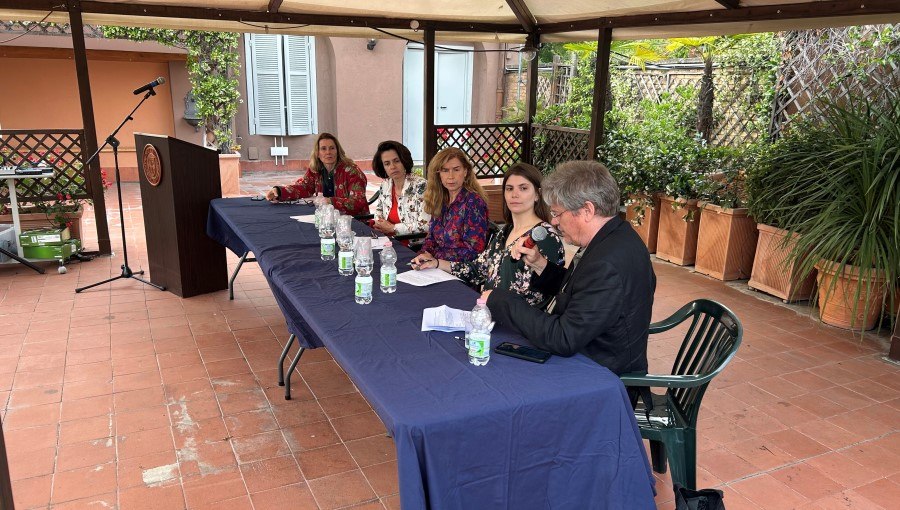Exploring the Human Auditory Brain with Professor Federico De Martino
As part of its Spring 2025 lecture series, JCU’s Department of Psychological and Social Sciences welcomed Professor Federico De Martino from Maastricht University on March 6. The event, “Unraveling the Past, Present, and Future in the Human Auditory Brain,” gave insight into how the human brain predicts sounds even before we hear them. With compelling examples of music, phantom sounds, and hallucinations, De Martino explained how our brain constantly generates predictions based on past experiences to help guide our perception.

How the Brain Predicts Sound
Professor De Martino explored the topic of how our brains don’t just react to sound, but also actively predict it. By listening to music, language, and sounds within our environment, the human auditory system constantly combines past and present experiences to anticipate what we will hear next.
To help explain this, De Martino used the example of the 1913 Paris premiere of William Stravinsky’s ballet and orchestral concert The Rite of Spring. Stravinsky strayed from the expectations held by the audience of what classical music should sound like, ultimately causing chaos to break out during the performance. “When we listen, we listen in a way that is biased by our expectations,” explained De Martino. “We match what we are hearing with our expectations, and depending on how this goes, we will perceive what we are hearing at that point in time.” These predictive processes are crucial for navigating noisy environments and stimuli such as music and language.
The Science Behind Sounds
To accurately visualize how predictions work in the human brain, De Martino discussed the inner workings of the auditory pathway from the ear’s cochlea to the auditory cortex. He explained that the brain is doing more than just passively receiving information. It is organized in a specific way to decode frequencies through a process called “tonotopy.” This is a process where regions of our brain are tuned to specific pitches such as low frequencies, and high frequencies.
These regions of the brain also receive feedback from higher areas of the brain, which is crucial for perception and learning. De Martino’s lab has made major breakthroughs in visualizing how sounds are processed and predicted using a 7-Tesla MRI Magnet and functional magnetic resonance imaging. This has allowed him and his team to discover column-like structures in the auditory cortex that had only been previously observed in animals.
De Martino’s experiments showed that the brain generates activity when anticipating a tone that was never actually played. This is proof that our brains are preparing for what we expect to hear and are not just reacting to what we hear.

What Happens When Prediction Fails
De Martino discussed the consequences of what happens when predictive processes in the brain don’t work as they should. One can develop chronic tinnitus, which is a constant ringing in the ears. This may be caused by the brain misinterpreting internal noise as real sound, and there is currently no cure. Furthermore, auditory hallucinations relating to schizophrenia may occur from the brain projecting false models of reality.
These consequences have powerful implications, as De Martino discussed. They suggest new ways to study and potentially treat neurological and psychiatric disorders. This is possible by using the same brain technology and processes that help us to predict a melody or anticipate a word in a sentence.
To conclude his lecture, De Martino underlined the high potential of ultra-high-resolution imaging to reveal where sound is processed and how the brain learns from errors. He also emphasized how impactful predictive processes can be on perception. “I hope that in this lecture I have convinced you that, in fact, we do hear prospectively,” said De Martino. “We predict what we are going to hear next, and we are influenced by all kinds of factors.”





